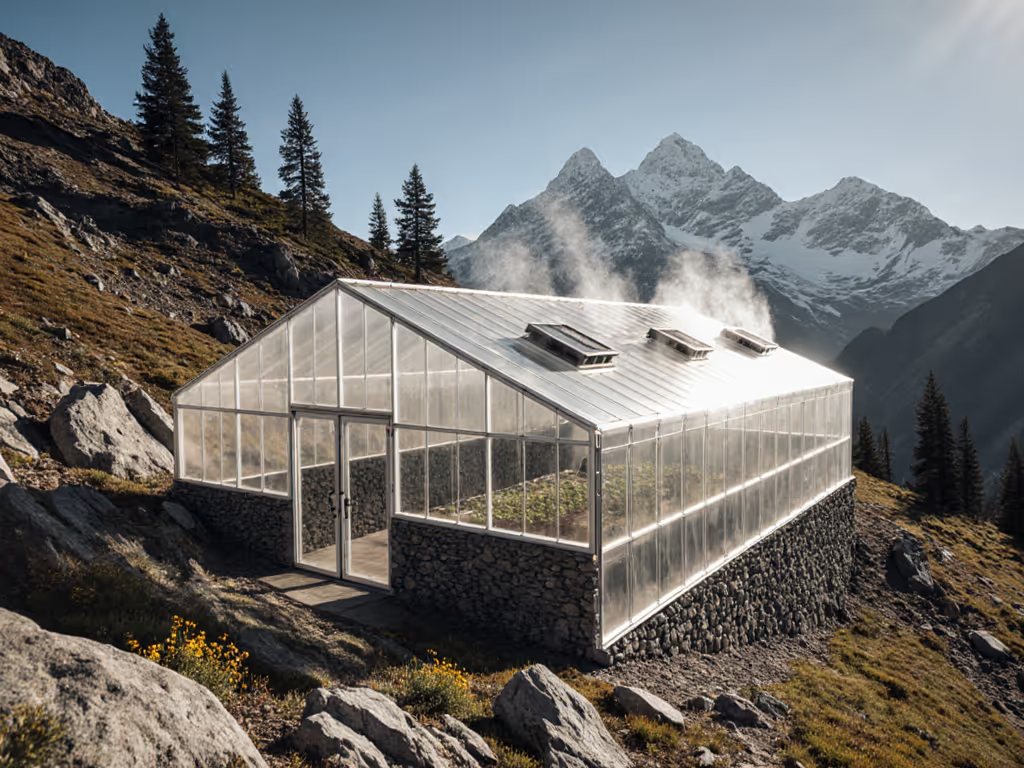
Greenhouse Temperature Zones: Grow Cool & Warm Crops Together
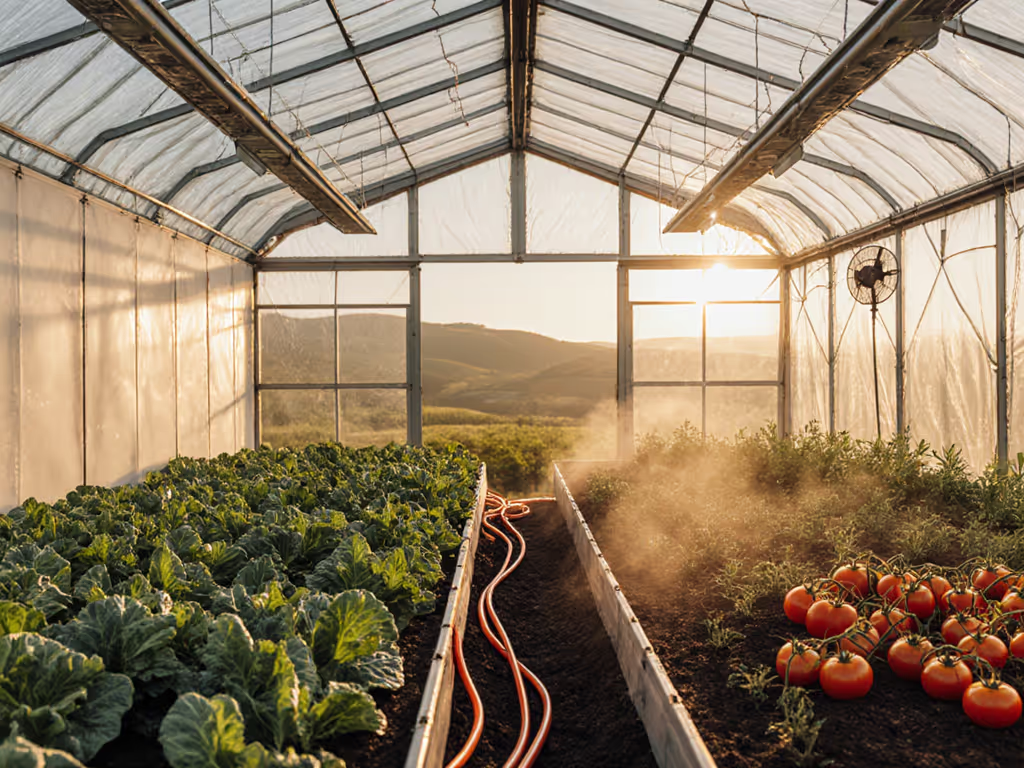
Most attached greenhouse owners assume they must choose between leafy greens or tomatoes. That is a false dilemma. The real failure point? Ignoring greenhouse temperature zones within your structure. I have seen more collapsed hoops from uneven snow load than from wind, and the same physics applies to thermal stress. When cool and warm greenhouse crops share space without proper zoning, you will sacrifice yields, invite disease, or worse, trigger structural fatigue from condensation cycles. Overbuild once; sleep through the wind warnings at night.
Why Your Greenhouse Isn't Growing Both Crops (And How to Fix It)
Critical Insight: Temperature gradients are not just about plant stress, they are structural red flags. Condensation pooling on cold frames accelerates corrosion. Uneven heating strains polycarbonate panels. These are preventable failure modes.
FAQ: Can I really grow cucumbers and greens together in a single greenhouse? Yes, but only if you engineer distinct thermal zones. Cucumbers typically need 70-85°F daytime temps while spinach thrives at 50-70°F. Attempting this without zoning causes two failures:
- Crop loss: Warmth-seeking cucumbers block light from cool crops
- Structural risk: Cold spots create condensation that rusts anchors (confirmed by Ceres' 2024 moisture-corrosion study)
The fix? Strategic microclimates. Position your attached greenhouse with southwest exposure for warmth-loving crops (like cucumbers), but add a northeast cooling zone using these steps:
- Insulate the north wall (per passive solar design) to trap heat away from cool-crop areas
- Install bench-level root-zone heating at or below 110°F only under warm crops
- Use phase-change material (PCM) panels on the east side to absorb morning heat, which is critical for growing cucumbers and greens together without overheating greens
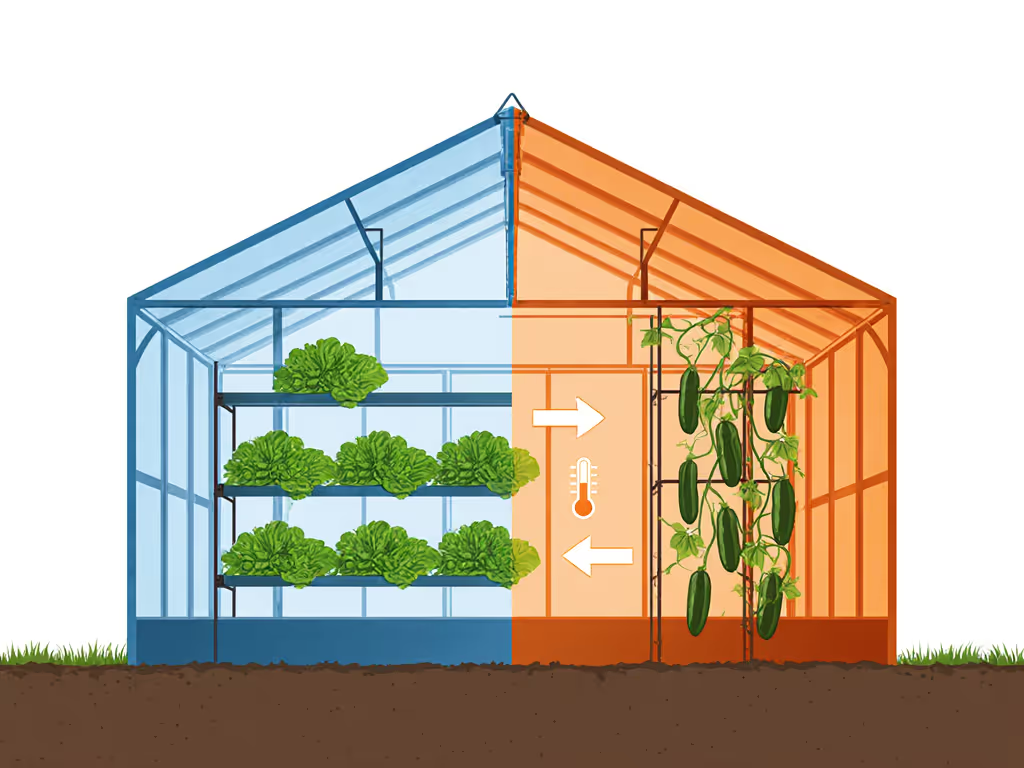
The Hidden Risk No Vendor Tells You About
FAQ: Why do my tomatoes wilt even when vents are open? The issue is not ventilation alone, it is airflow direction. Natural cross-ventilation (roof + sidewall vents) only works if wind hits your attached greenhouse perpendicularly. In exposed zones, wind funnels under crops instead of through them. Result:
- Heat buildup at canopy level (killing tomatoes)
- Cold drafts at root level (stunting greens)
This is where anchors become crop insurance. During my coastal rebuild, we used helical anchors rated for 1,200 lbs pullout, overkill for code, but necessary when wind creates negative pressure that sucks heat from soil. Tighten what weather will loosen: Torque anchor bolts to 85 ft-lbs minimum (not the 60 lbs vendors suggest) to prevent frame flex that cracks glazing during thermal expansion. Skimp here, and your greenhouse temperature zones collapse when gusts hit.
Your Crop Rotation Checklist for Stable Zones
FAQ: How do I rotate crops without messing up temperature zones? Crop rotation greenhouse planning fails when growers ignore thermal legacy. Last season's tomatoes leave soil 5-8°F warmer than lettuce beds, enough to crash new seedlings. Do this:
| Rotation Step | Action | Torque Check |
|---|---|---|
| Pre-plant | Lay EPDM tubing under warm-crop beds (≤25 Btu/sq ft) | Verify 110°F max flow |
| Mid-season | Shift shade cloth to only the cool-crop zone during heat spikes | Re-tighten vent hinges to 45 in-lbs |
| Post-harvest | Replace north-wall PCM panels if condensation exceeds 30% RH | Inspect anchor depth (min 36" below frost line) |
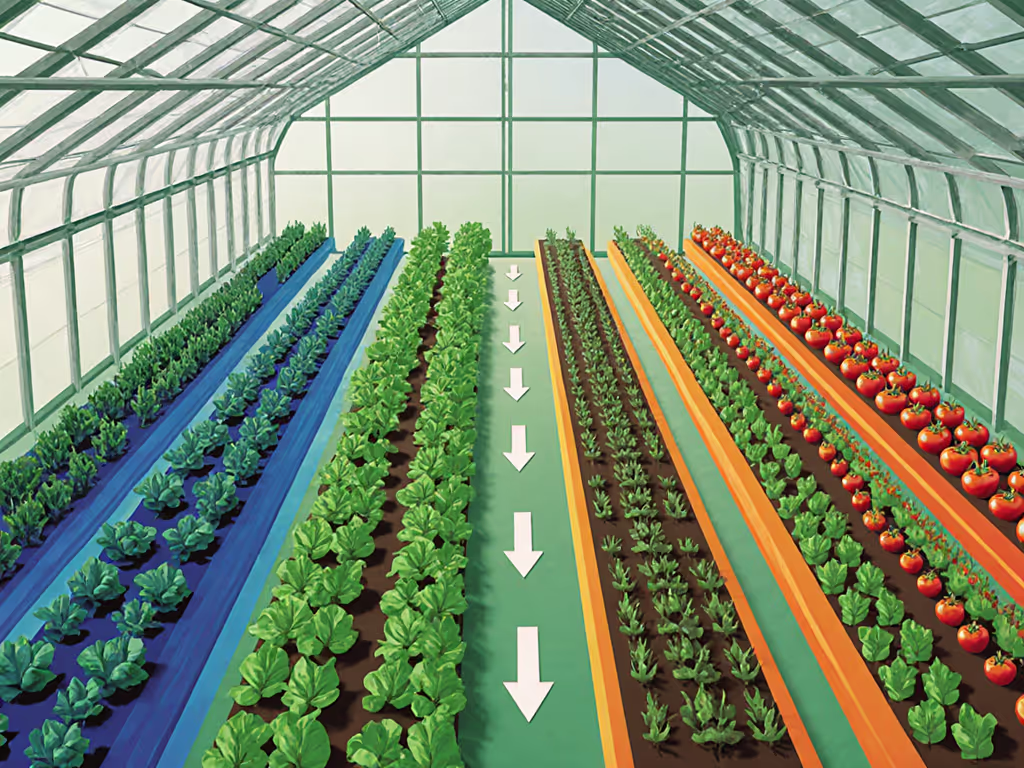
This is not optional. In Climate Zone 5 (Mixed Humid), unmoderated soil temp swings from 65°F to 92°F in 72 hours, slicing yields by 40% (per UConn's greenhouse trials). Your small greenhouse heating strategy must include zone-specific humidity control. Use hygrometers spaced every 8 ft (not one central sensor) to catch microclimate failures before plants show stress.
The Actionable Next Step: Stress-Test Your Zones Today
Do not wait for crop failure. Run this 10-minute greenhouse temperature zones audit:
- Map hot/cold spots: Place thermometers at plant canopy height in all quadrants at 2 PM
- Check anchor integrity: Grab frame corners. Any movement greater than 1/4" means re-torque or replace (flat roofs equal 2x snow load risk)
- Simulate cross-vent flow: Light incense at vents, and smoke should travel horizontally between roof and sidewall vents. If it pools, add intakes opposite prevailing winds
If your attached greenhouse has less than a 10°F difference between southwest (hottest) and northeast (coolest) zones, you are gambling with cool and warm greenhouse crops. Fix the north wall insulation first, it is 3x more effective than adding fans (per Ceres' GAHT system data). Then install a manual zone divider, like a roll-up shade curtain, until you confirm consistent temps. For step-by-step zoning techniques, read our greenhouse microclimates guide.
I have walked fields of warped polycarbonate from undersized anchors. Owners cried over lost seedlings. Today? Their rebuilt structures hold steady during 60-knot gusts. Resilience is not expensive, it is the cheapest insurance you will ever buy. Start with your weakest thermal zone. Then sleep soundly.
Related Articles

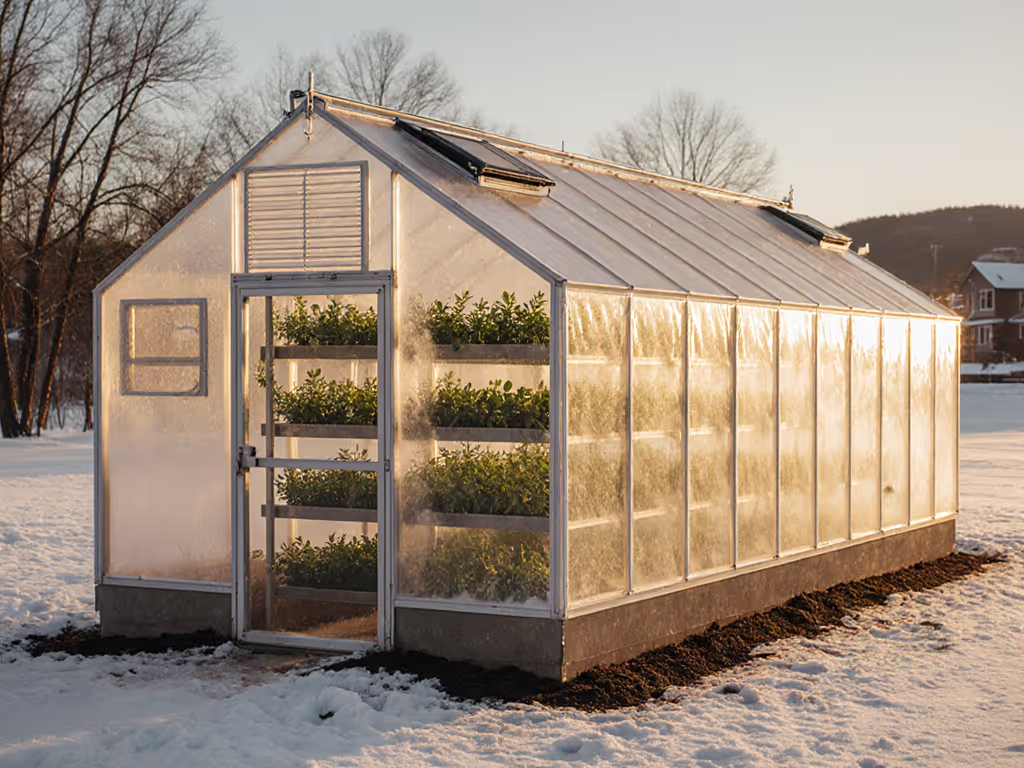
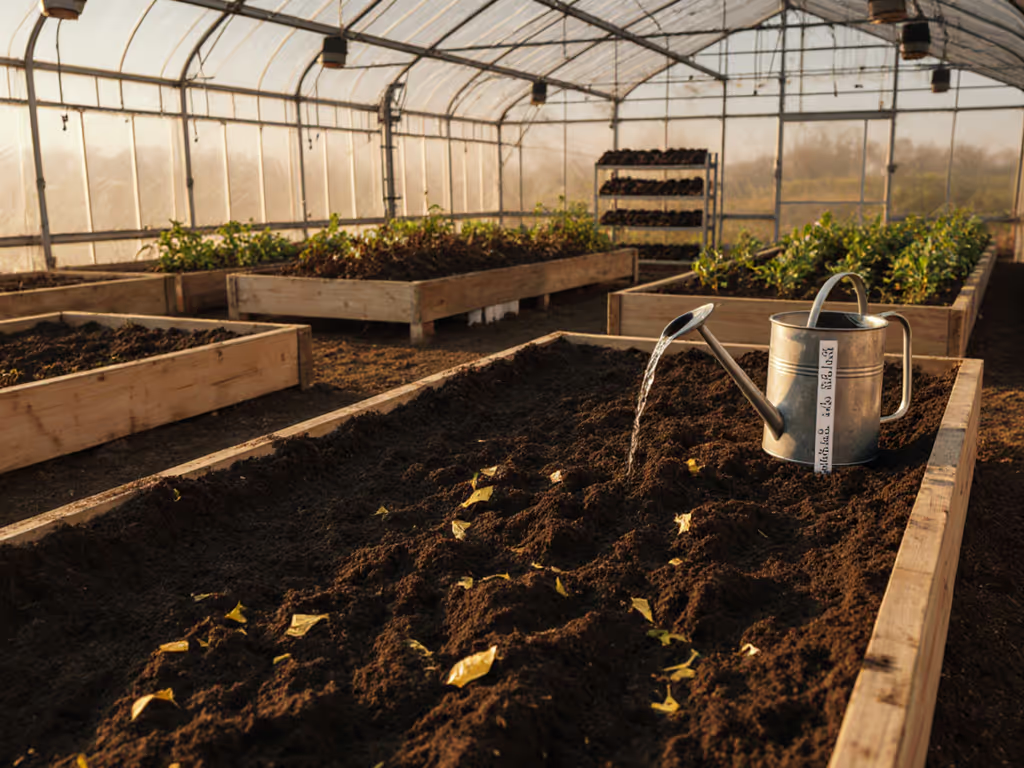
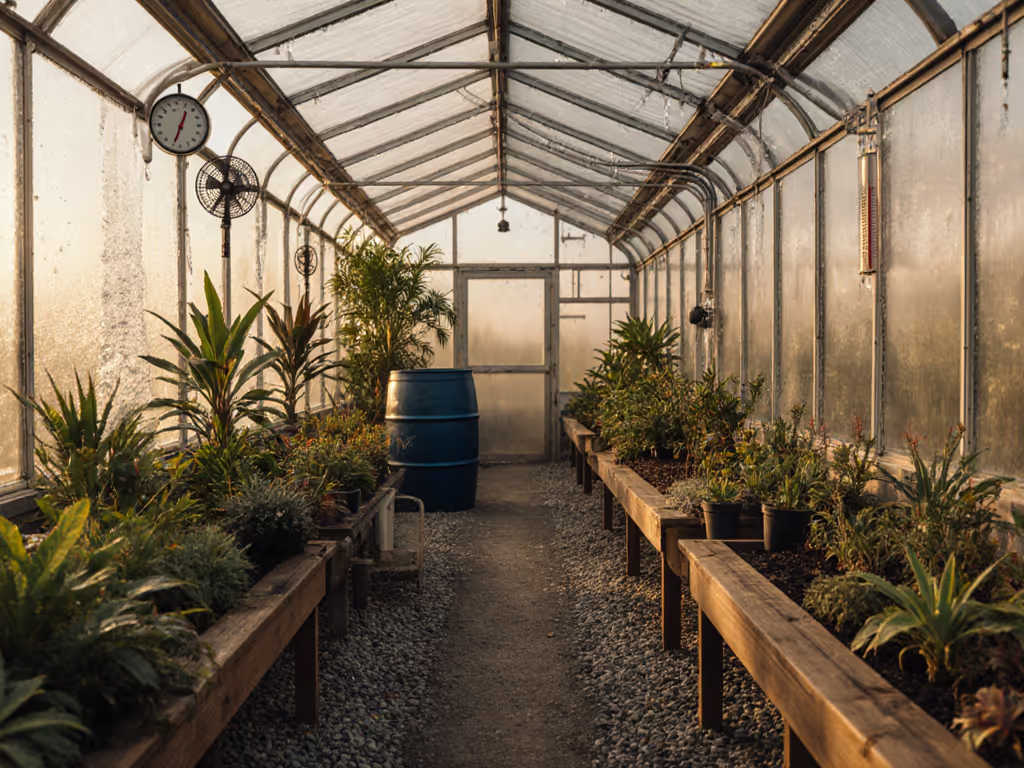
Greenhouse Microclimates Made Simple: Zone Plants Easily
Map your greenhouse’s hot and cool spots, then zone plants with simple, low-tech strategies - water barrels, airflow, smart placement, and seasonal tweaks - to stabilize heat and humidity, boost growth, and keep the space comfortable year-round.
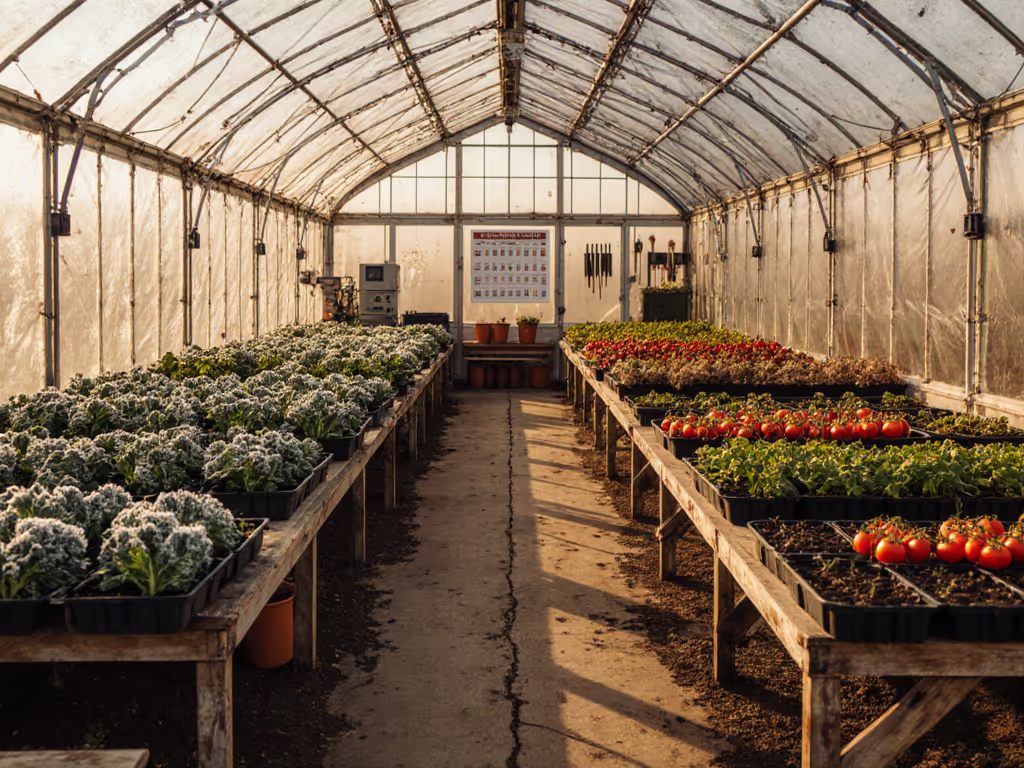
Greenhouse Planting Calendar: Four-Season Harvest Guide
Master a four-season greenhouse by scheduling to daylight and temperature, seeding winter crops early, staggering spring successions, mitigating summer heat, and using microclimate data for crop placement. Practical timelines and metrics turn sporadic harvests into continuous yields.
